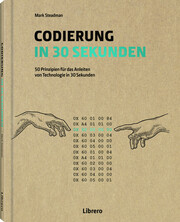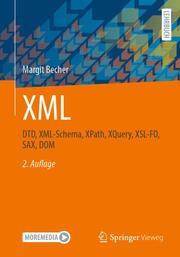Custom Raspberry Pi Interfaces (E-Book, PDF)
Custom Raspberry Pi Interfaces
eBook - Design and build hardware interfaces for the Raspberry Pi
Bibliographische Informationen
Format: Digitale Rechteverwaltung: Digitales Wasserzeichen
Beschreibung
Design and build custom hardware interfaces for the Raspberry Pi and discover low cost display and sensor options for embedded system projects.
With this book you'll master 12C communications using Raspbian Linux in C++ and perform ADC and DAC experiments. You'll experiment with debounce buttons and switches using hardware and software solutions. Develop flywheel rotary encoder effects for ease of tuning and construct a hardware interface to the Music Playing Daemon (MPD) with developed software. Discover how to add your own hardware keypad for remote combination lock applications.
Custom Raspberry Pi Interfaces offers a thorough chapter on interfacing 5-volt systems to 3.3-volt Raspberry Pis designed to expand your choice of peripheral options. Ready to go C++ programs involving GPIO and I2C peripherals are provided. This book also explores ADC, DAC, rotary encoders, CMOS shift registers. I2C I/O extenders.
What you'll learn:Build simple, low cost input/output interfaces including rotary encoders Interface with 5-volt devices from a 3-volt Raspberry Pi system Apply analog to digital and digital to analog conversions on the Pi Read potentiometers (volume control) from the Pi Determine step, directions, and velocity of a rotary encoder Perform remote interfacing using the I2 PCF8574 chipWork with external CMOS devices like the 74HC595 (in C++)Who this book is for:Students and hobbyists interested in building custom interfaces for their Raspberry Pis.Autorenportrait
Inhalt
Chapter 1: Introduction
Chapter 2: 3V/5V Interfacing
Chapter 3: VGA LCD Monitors
Chapter 4: I2C LCD Displays
Chapter 5: MC14490 and Software Debouncing
Chapter 6: PCF8591 ADC
Chapter 7: Potentiometer Input Controls
Chapter 8: Rotary Encoders
Chapter 9: More Pi inputs with 74HC165
Chapter 10: More Pi outputs with 74HC595
Chapter 11: MCP23017 I/O Port Extender
Chapter 12: MPD/MPC Hardware Controls
Chapter 13: Keypad Controls
E-Book Informationen
„eBooks“ sind digitale Bücher. Um eBooks lesen zu können, wird entweder eine spezielle Software für Computer, Tablets und Smartphones oder ein eBook-Reader benötigt. Da es eBooks in unterschieldichen Formaten gibt, gilt es, folgendes zu beachten.
Von uns werden digitale Bücher in drei Formaten ausgeliefert. Die Formate sind EPUB mit DRM (Digital Rights Management), EPUB ohne DRM und PDF. Bei den Formaten PDF und EPUB ohne DRM müssen Sie lediglich prüfen, ob Ihr eBook-Reader kompatibel ist. Wenn ein Format mit DRM genutzt wird, besteht zusätzlich die Notwendigkeit, dass Sie einen kostenlosen Adobe® Digital Editions Account besitzen. Wenn Sie ein eBook, das Adobe® Digital Editions benötigt, herunterladen, erhalten Sie eine ASCM-Datei, die zu Digital Editions hinzugefügt und mit Ihrem Account verknüpft werden muss. Einige eBook-Reader (zum Beispiel PocketBook Touch) unterstützen auch das direkte Eingeben der Login-Daten des Adobe Accounts – somit können diese ASCM-Dateien direkt auf das betreffende Gerät kopiert werden.
Da eBooks nur für eine begrenzte Zeit – in der Regel 6 Monate – herunterladbar sind, sollten Sie stets eine Sicherheitskopie auf einem Dauerspeicher (Festplatte, USB-Stick oder CD) anlegen. Außerdem ist die Anzahl der Downloads auf maximal 5 begrenzt.
Weitere Artikel aus der Kategorie "Informatik, EDV/Allgemeines, Lexika"
Lieferbar innerhalb 24 Stunden

Lieferbar innerhalb ca. einer Woche

Lieferbar innerhalb ca. einer Woche

Lieferbar innerhalb 14 Tagen






